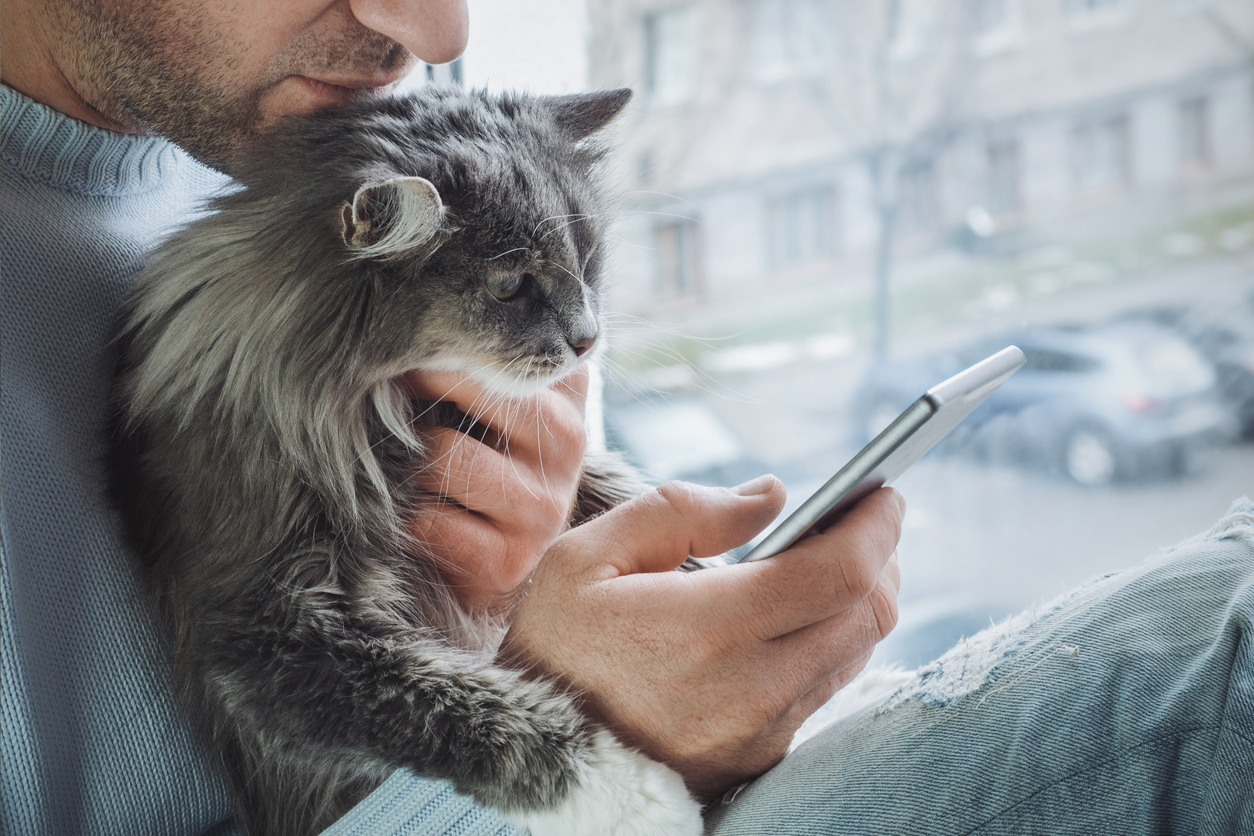Understanding your pet’s health risk
A good starting point is to understand breed specific health conditions. While any pet can experience illness or injury, some may be genetically predisposed to developing certain health disorders, thereby putting them at an increased risk. Websites like the PetSure Knowledge Hub provide a good resource of information and insights, including breed specific health conditions, to help you better understand your pet’s baseline health profile.
Recognising and prioritising clinical signs/symptoms
Not all healthcare situations are a crisis. By learning to categorise your pets’ symptoms, you’ll be able to determine the best course of action.
Clinical signs/symptoms fall under three basic categories:

When to monitor
Recognising indications of pain, discomfort or distress in your pet can provide early warning signs. It’s also helpful to understand common clinical signs that have the potential to progress and worsen over time, as this enables you to investigate, monitor and escalate if or when veterinary advice or treatment is needed.
The practical triage guide provided here offers some advice on how to recognise and monitor early symptoms. It also recommends when and how to escalate, but anytime you have concerns about your pet you should never hesitate to seek veterinary advice.
When to seek veterinary advice
Your local vet should be your first point of contact for general advice over the phone and can help you to determine the best course of action for your pet. Alternatively, a telehealth provider such as VetChat is another option, and can be particularly useful outside of standard business hours.
VetChat is a video call service with an Australian qualified vet, available 24 hours a day, seven days a week. They provide pet owners with immediate advice and guidance and will work with you to identify when it’s safe to continue to monitor your pet or if a visit to the vet is required. They will also guide you on the degree of urgency required, serving as a pivotal point on the escalation scale. This is particularly important for conditions that aren’t likely to improve without veterinary intervention and if left too long could worsen and potentially cost more in vet bills.
The most common VetChat enquiries for 2023 include:
| Condition | % of total enquiries* |
|---|---|
| Gastrointestinal issues – vomiting, diarrhoea | 22% |
| Skin irritations | 13% |
| Ingestion of foreign body or toxin | 5% |
| Eye concerns | 4% |
| Wound checks | 3% |
| Nutrition questions | 3% |
*Sourced from VetChat 2023 consult data
When to make an urgent vet visit
In an emergency or with any sudden escalation in existing clinical signs (including any new development or behaviour change that is completely out of character for your pet), you shouldn’t hesitate to make an urgent vet visit. In addition, anytime that you are concerned for your pet’s health and safety you should always contact your local vet or nearest emergency clinic.
Download the below escalation guide here.
Practical-Triage-GuideVeterinary Emergencies
The following clinical signs/symptoms can be true emergencies and require immediate in-clinic attention by a vet. In almost all situations, the sooner your pet receives veterinary care the better the prognosis.
To download our quick reference guide for emergencies, click here.
Collapse
This can be caused by many serious health conditions and it’s important to get straight to a vet so they can try to stabilise your pet, where they can, and then diagnose and treat the underlying cause.
Trauma
All traumatic accidents and injuries need to be treated as veterinary emergencies. Broken bones, excessive bleeding, being hit by car, falling from a height, dog attacks and cat fights are all considered traumatic events. Even if your pet appears to be ok, there may be internal damage that’s hidden from view.
Difficulty breathing
Oxygen is necessary for life, so if your pet is struggling to breathe, particularly if they have a bluish tinge to their gums, you need to seek emergency veterinary treatment*.
*Short nosed (Brachycephalic) dog breeds are particularly at risk of breathing difficulties, especially in hot weather or after intense exercise.
Straining to urinate
The formation of mineral-based crystals or stones in the bladder can stop your pet from being able to urinate. This requires urgent intervention to prevent the bladder from bursting and may require emergency surgery if the bladder does rupture.
Seizures
There are many potential causes of seizures in cats and dogs, but prolonged or frequent, intense seizure activity is a veterinary emergency. In general, all episodes of seizure, sudden disorientation, changes in alertness and inability to walk normally should be urgently investigated by your local vet.
Sudden bloating
This may indicate a sudden internal bleed or fluid accumulation but can also indicate a bloated and/or twisted stomach (particularly in deep chested dogs). It’s vital to get straight to your vet so they can stabilise, diagnose and manage the underlying cause. Emergency surgery is sometimes necessary.
Be prepared
If you have pet insurance, you may be able to seek pre-approval for a GapOnly® claim ahead of your appointment. Have your policy details handy and check with your vet clinic if they are GapOnly® ready. This can streamline the process at payment, as you will only have to pay the difference between the vet bill and your benefit amount.
*GapOnly® is a trademark owned by PetSure (Australia) Pty Ltd ABN 95 075 949 923, AFSL 420183 (PetSure). Insurance products are issued by The Hollard Insurance Company Pty Ltd ABN 78 090 584 473, AFSL 241436 (Hollard) and/or PetSure (from 8 May 2023 only), administered by PetSure and promoted and distributed through their authorised representatives and distribution partners. Any advice provided is general only and does not take into account your individual objectives, financial situation or needs. Cover is subject to the policy terms and conditions. Please consider the Product Disclosure Statement (PDS) to ensure this product meets your needs before purchasing or choosing to continue with the product. PDS and Target Market Determination available on our partners’ websites. Meet our partners at gaponly.com.au/gaponly-insurance-partners.
Pet insurance can help by covering a portion of the eligible vet bill if the unexpected happens. Because it is difficult to predict the costs of veterinary care, it can help to have measures in place to help prepare for the unexpected. Check out our partner network and explore our policy tools to find a pet insurance policy.
Not all conditions or items are covered by Pet Insurance. Refer to the applicable Product Disclosure Statement for information about coverage and exclusions.



 Fact checked
Fact checked





